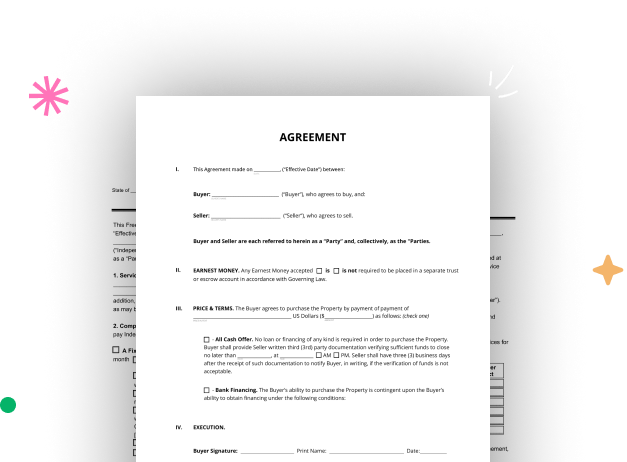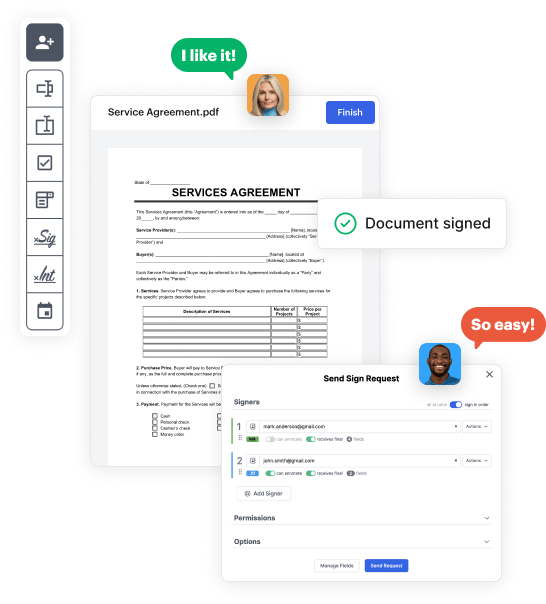

Start signining into your DocHub account. Explore the pro DocHub functionality free for 30 days.
Once signed in, go to the DocHub dashboard. This is where you'll build your forms and manage your document workflow.
Click on New Document and select Create Blank Document to be redirected to the form builder.
Use the DocHub toolset to insert and configure form fields like text areas, signature boxes, images, and others to your document.
Include needed text, such as questions or instructions, using the text field to lead the users in your document.
Modify the properties of each field, such as making them mandatory or arranging them according to the data you plan to collect. Designate recipients if applicable.
After you’ve managed to design the Daily cash drawer Balance Sheet Template, make a final review of your document. Then, save the form within DocHub, export it to your preferred location, or share it via a link or email.